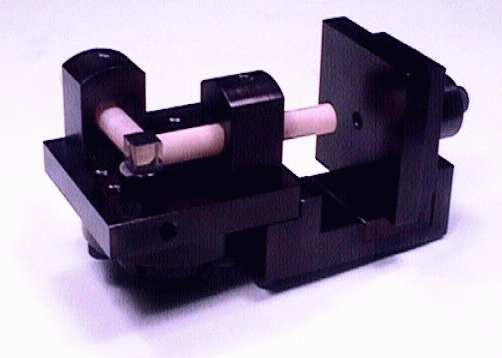

|
Optics in Computing |
Future high-performance computing systems will work by merging electronic and optical technologies. While mature electronic devices can efficiently perform data processing on a single chip, optics can be used to overcome the inter-chip interconnection bottleneck on multi-chip modules (MCM) and also between printed circuit boards (PCB) by providing high-bandwidth, high connectivity and high density communication channels. Intra-chip (static or reconfigurable) optical interconnections are also of interest, for instance for reducing wiring congestion and giving flexibility to the interconnexion topology.
Following the design philosophy of Vision Chip, we have been studying two-dimensional arrays of optoelectronic integrated single-instruction multiple-dimension (SIMD) elementary processors having independent optical inputs as well as optical outputs thanks to arrayed vertical-cavity lasers (VCSELs). The OCULAR architecture (Optoelectronic Computer Using Laser Arrays with Reconfiguration) consist on pipelinening several such processing arrays, resulting in a system with tremendous processing bandwidth. We have been studying systems in wich the parallel optical interconnections between the pipelined processing arrays are fixed or reconfigurable, space-variant or space-invariant . We proposed, designed and tested reconfigurable holographic interconnections using spatial-light modulators, guide-wave based fixed interconnections (using fiber bundles) or mechanically reconfigurable interconnections using mobable blocks of stacks of printed light-wave circuits. At present, we are considering nanosecond-reconfigurablity using integrated semiconductor optical gates.
Applications of such ultra-high bandwidth, densely interconnected and pipelined opto-electronic architecture lie, among others, in the field of optimization and learning machines, information retrieval in huge-databases, real-time image processing, processing of data on parallel confocal microscope systems, etc. Since the elementary processing and routing of optical signals required in next-generation optical routers is also possible using OCULAR, we recently ventured on the field of optical circuit and packet switching.
 |
 |
Our research on optoelectronic parallel processing systems has followed two complementary lines, namely Optoelectronic Architectures and Algorithms, and Optoelectronic Subsystems and Devices (the later using a variety of novel technologies, including MOEMS). Our approach is both theoretical and experimental, with an accent on system demonstrators. The following list summarizes present and past research:
Optical Networking
Optics in Computing
Integration and Alignment of Optical Interconnection Systems
Reconfigurable Interconnections & Optical Switches
[Home| Sensor Fusion| DVS| Vision Chip| Members| Papers| Movies]
Ishikawa Nami Komuro laboratory WWW admin: www-admin@k2.t.u-tokyo.ac.jp Page last updated by A. Cassinelli, 20.10.2004